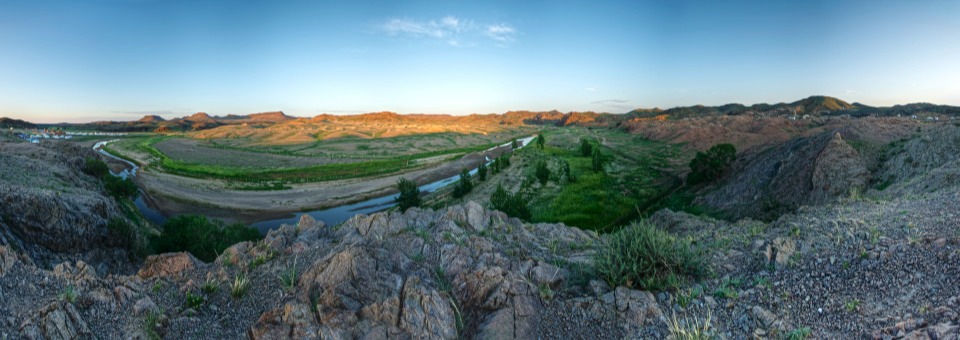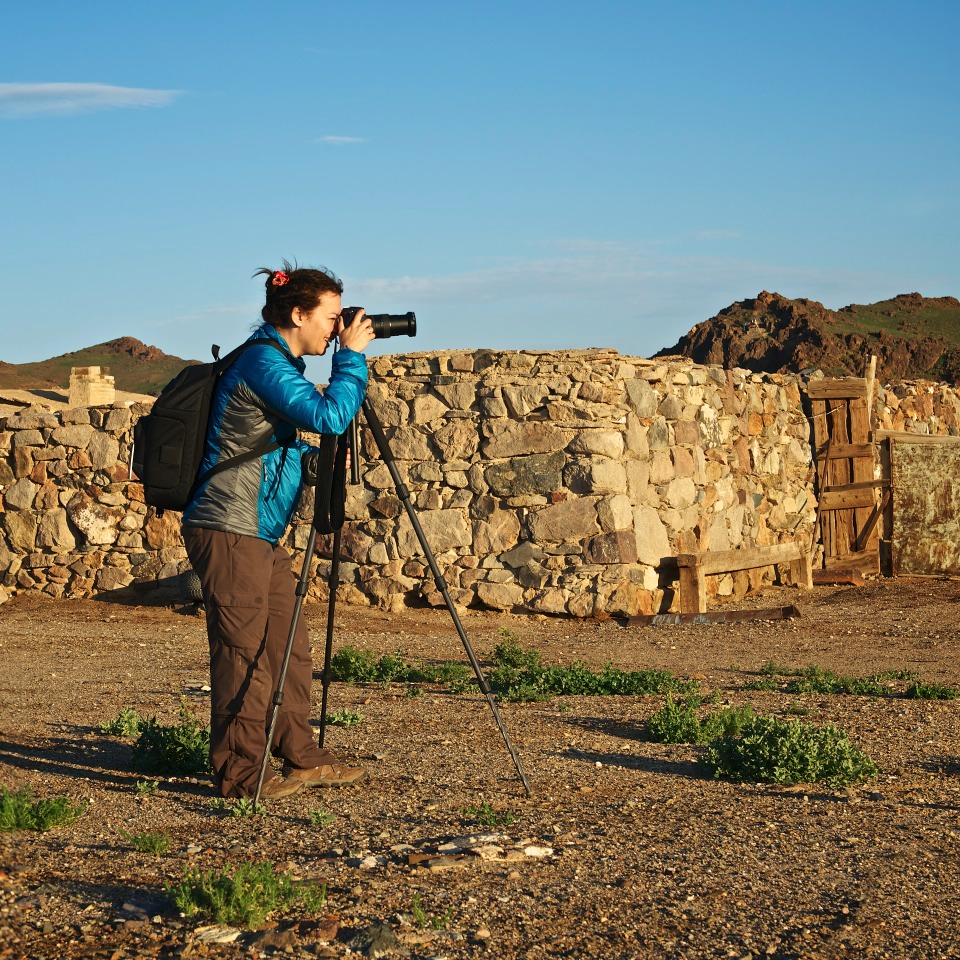Mongolia
Between sky and earth…
Ongiin Khiid

Enclosure at Ongiin Khiid. ©2012 Robert Prior
Ruins, both real and metaphorical…
I think we were all looking forward to a bit of luxury at this stop. Hot showers for ourselves, electricity for our computers, and some interesting ruins to photograph as well. We got the ruins, but there was a province-wide power failure, which mean no showers (no power for the pumps) and no recharging. I managed a cold shower in the trickle of water left in the pipes, so I felt only moderately grubby (and slightly grumpy — mostly because I'd been looking forward to a hot shower all day). The staff did the best they could, with candles and buckets of water from another camp (that had a functioning well). So the logical thing to do was plan an early night and an early rise for pre-dawn pictures…

Photographing the north ruins of Ongiin Khiid. ©2012 Robert Prior
Unfortunately, we hadn't planned on the party of Italians also staying at the camp. They promenaded among the gers until past midnight, smoking and chattering, and calling "ciao" across half the camp to people they wouldn't see again for at least eight hours. One grande dame held court just behind my ger, about six feet from my sleepy head. On the bright side, I only had to listen to her for one night (and the early part of the morning) — her poor husband has a longer sentence — but after listening to calls of "ciao" for half the night I was too tired to get up as early as I'd wanted. I confess I did think of being really noisy just outside her ger, but decided that two rudenesses didn't make a politeness, so I just got moving as soon as I could.

Sunrise over Ongiin Khiid. ©2012 Robert Prior
We didn't catch the sunrise I'd hoped for, but we were still in time for a spectacular daybreak. We found a spot overlooking the Ongi Gol river and soaked in the beauty. The contrast between sharp hills and lush river flats, all glowing in the golden dawn light, reminded me of the Alberta Badlands. On the other hand, in Alberta the Badlands are a thin ribbon surrounded by farms, while in Mongolia the valley is a thin ribbon surrounded by scrub desert.

Sunrise over Ongiin Khiid. ©2012 Robert Prior

Ruins of Ongiin Khiid. ©2012 Robert Prior

Photographing Ongiin Khiid. ©2012 Robert Prior
Wikipedia Article
Ongiin Khiid is a sightworthy monastery on Ongi river about 18 km from Saikhan Ovoo. Formerly one of the largest monasteries in Mongolia, it was founded in 1660 and consisted of two temples complexes on the North and South of the Ongi Gol river. The older southern complex consisted of various administrative buildings as well as 11 temples. The northern complex, built in the 18th century, consisted of 17 temples - among them one of the largest temples in all of Mongolia. The grounds also housed four Buddhist universities. It was completely destroyed in 1939 under Khorloogiin Choibalsan, then president and leader of the Communist Party of Mongolia. Over 200 monks were killed, and many surviving monks were imprisoned or forced to join the Communist controlled army. A large number of ruins including a tall stupa can be seen on the river and on the surrounding hills. In the 1990s, it was decided to rebuild the monastery. The first temple was inaugurated in 2004. There is a small museum in a ger in front of it. One of the stupas has just been reconstructed as well. It has a conmemorative plaque indicating the names of the monks who were killed in 1939. At present (2011), 13 monks live in the monastery.